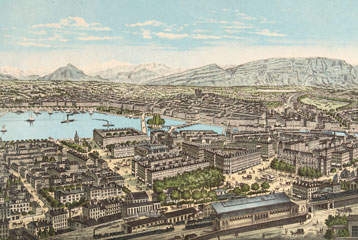From Napoleon to the founding of “Grande Genève”, the municipal system has undergone several transformations.
When did the City of Geneva’s municipal system come into being? Paradoxically, it was born with the annexation of Geneva by the French Republic in 1798. In 1800, a law required each municipality to be administrated by a mayor, his deputies and a municipal council. In Geneva, the mayor, supported by two deputies, was initially appointed by the First Consul, then by the Emperor himself.
Restoration
The Restoration of the Republic in 1814 brought an end to the City of Geneva’s independence, henceforth placed directly under the aegis of the State Council. The municipal administration was incorporated into the cantonal administration.
The revolution of 1841
It was primarily the refusal to alter this municipal system that led to the revolution of 1841 which, together with the introduction of universal suffrage, allowed a restructuring of the municipal organisation. In 1842, a first elected municipal council boasting 81 members elected an administrative board consisting of 11 members.
A constitution for Geneva
Five years later, the Constitution of 1847, which governs the Republic and the canton of Geneva to this day, enshrined the municipal status of the City of Geneva. A 41-member municipal council elected an administrative board comprising 5 magistrates. The second half of the 19th century saw the municipal administration grow significantly in importance.
“Grande Genève”
On 18 May 1930, four years after an initial rejection, the voting public of Geneva agreed to the creation of “Grande Genève”, bringing together the municipalities of Geneva, les Eaux-Vives, Plainpalais and le Petit-Saconnex. The city was governed by an administrative board comprising 5 members accompanied by a municipal council of 80 members. The administrative tasks were shared between the city and the state. This organisation is still in force today.
Article modifié le 18.08.2023 à 11:23

